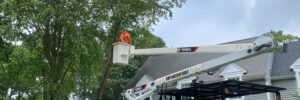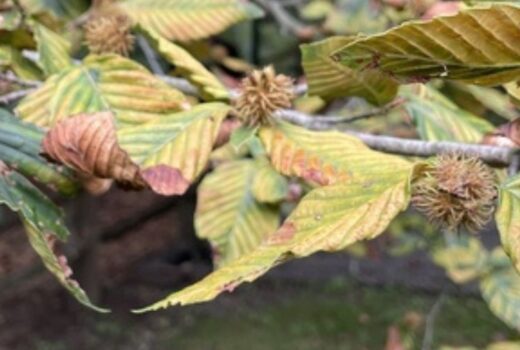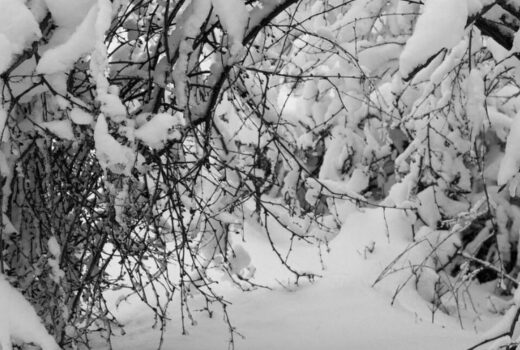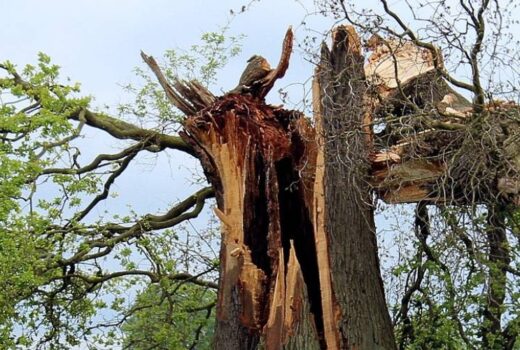When trees develop cracks and splits in their wood, it signals potentially serious issues requiring swift care. These stress cracks can worsen, severely damaging trees and creating safety hazards if ignored. Homeowners can keep their trees healthy and hazard-free by understanding what causes cracks and taking preventative action.
What Are Stress Cracks in Trees?
Stress cracks form when forces inside or outside the tree cause the wood to split and fracture. They typically appear as long splits or fissures running through the bark. The cracks may penetrate deep into the trunk, branches, or roots.
While trees can seal off and compartmentalize small cracks over time, major stress cracks allow moisture, decay, and pests to infiltrate the wood. This leads to extensive structural damage, health decline, and potential whole tree failure.
Top Causes of Stress Cracks in Trees
Various environmental factors, weather events, and tree health issues can trigger stressful internal pressures that result in stress cracks. Homeowners should watch for:
Lightning Strikes
When lightning hits a tree, the intense, instantaneous energy creates explosive pressures inside the wood, rupturing cell walls and forming severe cracks or shattering the trunk. Even non-lethal strikes weaken trees over time.
Decay Fungi
Fungal organisms that cause wood decay also degrade the structural integrity, making trees prone to cracking from regular strains. Advanced decay leads to large hollowed-out areas hidden within the trunk.
Insect Infestation
Wood boring insects like emerald ash borer larvae tunneling inside the trunk build up pressure by compacting frass in their galleries. Their damage causes exterior cracking.
Poor Branch Attachments
Included bark, double leaders, and V-shaped branch forks create weak attachments that split from wind and ice loads. These pose safety risks from breaking.
Freeze-Thaw Cycles
In colder climates, the expanding and contracting forces of water freezing and thawing inside the wood slowly propagate cracks over seasons.
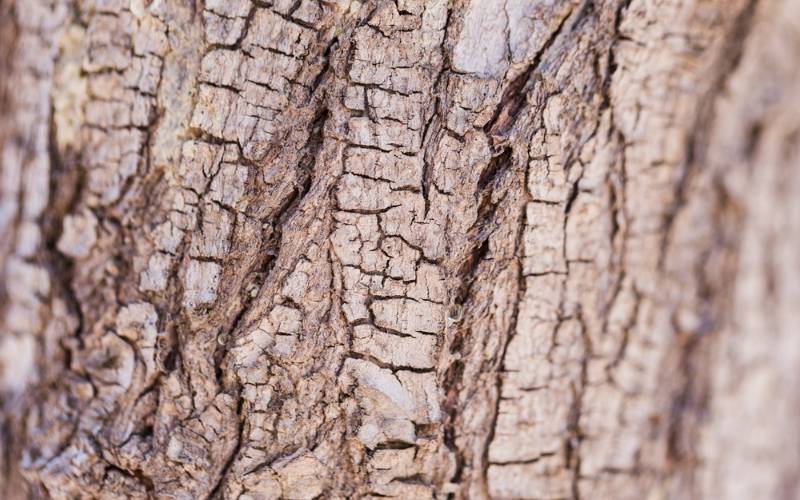
Stress cracks can appear on trees due to a variety of factors.
Preventing Stress Cracks in Trees
While some factors behind cracks can’t be avoided, homeowners can take proactive steps to minimize cracks, including:
- Providing proper irrigation to keep trees healthy
- Avoiding lawn mower and weed trimmer damage to bark and roots
- Managing pests like borers through monitoring and organic treatments
- Inspecting trees after storms and pruning cracked branches
- Structural pruning when young to establish strong branch attachments
- Preventative cabling to reinforce weak, split-prone branches
- Hiring arborists to assess trees and detect issues early
Catching problems before major cracks emerge is critical to long-term tree health and safety. At the first sign of cracks, call a certified arborist right away.
Stress Cracks in Trees – Frequently Asked Questions
What causes stress cracks in trees?
Rapid temperature changes, extreme weather conditions, or sudden environmental factors often cause tree stress cracks. These cracks can also result from internal pressure caused by decay, disease, or structural weaknesses in the tree.
Are stress cracks a serious threat to the health of a tree?
While stress cracks may not be immediately harmful, they can provide entry points for diseases and pests. Over time, if left unaddressed, stress cracks can compromise the tree’s structural integrity, making it susceptible to further damage or failure.
Can stress cracks be repaired, or does the tree need to be removed?
Repairing stress cracks in trees can be challenging, and the approach depends on the severity and location of the cracks. In some cases, pruning or cabling may help support the tree, but for extensive damage, removal may be necessary to ensure safety.
How can I prevent stress cracks in my trees?
Proper tree care practices can help prevent stress cracks. Regularly inspect trees for signs of decay or disease, provide adequate watering during dry periods, and avoid over-pruning. Protecting trees from extreme weather conditions, such as sudden temperature fluctuations, can also reduce the risk of stress cracks.
Is there a particular season when trees are more prone to stress cracks?
Trees are often more susceptible to stress cracks during rapid temperature changes, such as in early spring or late fall. These fluctuations can lead to the contraction and expansion of the tree’s bark, increasing the likelihood of stress cracks.
Can stress cracks be a sign of a deeper issue with the tree’s health?
Yes, stress cracks can indicate underlying problems with a tree’s health. It’s essential to investigate the cause of the stress cracks, as they may result from issues like root damage, diseases, or structural weaknesses. Consulting with a certified arborist can help diagnose and address these underlying concerns.
Are there specific tree species more prone to stress cracks?
Certain tree species may be more prone to stress cracks due to variations in bark characteristics, growth patterns, and disease susceptibility. For example, trees with thin or smooth bark may be more vulnerable. However, individual tree health and environmental factors also play a significant role. Regular monitoring and appropriate care are crucial for all tree species.
Stress Cracks? Call Top Notch Tree Today
Found cracks in your Rockland trees? Call Top Notch Tree at 781-871-8008 for an expert assessment. Our certified arborists have unmatched tree knowledge and provide quality care in pruning, removals, risk evaluations, and more. Keep your trees healthy and get ahead of issues with Top Notch Tree.


